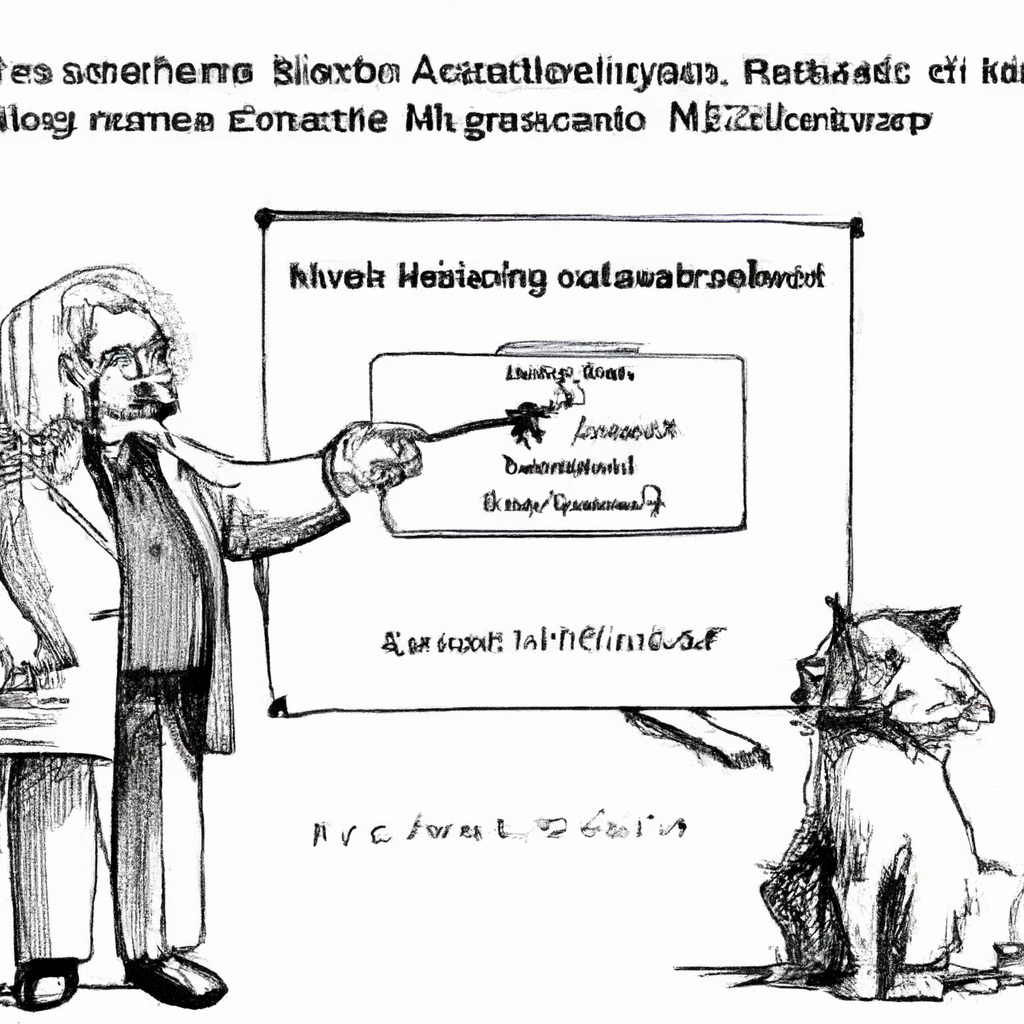
Artificial Intelligence: A Beginner’s Guide to Unlocking its Potential
In today’s rapidly advancing technological landscape, one term that often dominates discussions is Artificial Intelligence (AI). From self-driving cars to voice assistants like Siri and Alexa, AI has become an integral part of our daily lives. If you’re new to the world of AI and want to understand what it entails and how it can benefit you, this beginner’s guide will provide you with a solid foundation.
What is Artificial Intelligence?
At its core, Artificial Intelligence refers to the development of computer systems capable of performing tasks that typically require human intelligence. These tasks include speech recognition, problem-solving, decision-making, visual perception, language translation – the list goes on. The ultimate aim behind AI is for computers or machines to mimic human cognitive abilities.
Types of Artificial Intelligence:
1. Narrow/Weak AI: This type focuses on specific tasks within a limited domain such as facial recognition or spam filtering.
2. General/Strong AI: This type aims at achieving human-level intelligence across diverse domains where machines can think autonomously in various situations.
How does AI work?
AI systems are built using algorithms designed by researchers or developers who train models with vast amounts of data relevant to their intended task(s). Here are three common techniques used in building these models:
1. Machine Learning (ML): ML involves training algorithms with large datasets so they can learn patterns from examples instead of being explicitly programmed.
Example: Spam Filtering – An email service uses machine learning algorithms trained on thousands/millions/billions(!)of emails labeled as ‘spam’ or ‘not spam.’ Over time it learns which characteristics signify each category and automatically filters incoming emails accordingly.
2. Natural Language Processing (NLP): NLP enables computers/machines/software programs/smart devices etc.,to interpret natural language input/output just like humans do.
Example: Voice Assistants – When we ask Siri “What’s the weather today?”, NLP algorithms process and understand our spoken words, then retrieve the relevant information from a weather database to provide an accurate response.
3. Computer Vision: This branch of AI focuses on enabling machines to interpret and understand visual data like images or videos.
Example: Facial Recognition – Law enforcement agencies use computer vision algorithms trained on vast datasets of faces to identify individuals in CCTV footage or photographs.
Benefits of Artificial Intelligence:
AI has numerous applications across industries, bringing forth several advantages:
1. Automation: AI can automate repetitive tasks, reducing human effort and increasing efficiency. For instance, chatbots can handle customer inquiries 24/7 without human intervention.
2. Personalization: By analyzing user preferences and behavior patterns, AI systems can deliver personalized recommendations for products/services tailored specifically to individual needs.
3. Decision-making support: Complex data analysis becomes manageable with AI-powered tools that help humans make informed decisions based on real-time insights derived from vast amounts of data.
4. Improved safety & security measures: From fraud detection in financial transactions to monitoring potential threats at airports using facial recognition technology – AI enhances security measures across various domains.
5. Advancements in healthcare & medicine: With machine learning algorithms capable of analyzing medical records or assisting in diagnoses, doctors can improve patient care by leveraging predictive analytics capabilities offered by AI systems.
In conclusion:
Artificial Intelligence is revolutionizing all aspects of our lives; its impact will only continue growing as more advancements are made every day! Understanding the basics behind how it works allows you to appreciate its power while also being aware of potential ethical concerns surrounding privacy and biases within these technologies.
Embrace this exciting field but remember that responsible development and usage are crucial for harnessing the true potential benefits brought about by Artificial Intelligence!
One example of Artificial Intelligence (AI) and its potential use is in autonomous vehicles. AI technology can be employed to develop self-driving cars that have the ability to perceive their surroundings, make decisions based on real-time data, and navigate safely without human intervention.
Through a combination of sensors such as cameras, lidar, radar systems, and advanced algorithms driven by machine learning techniques, autonomous vehicles can analyze the environment around them. They process this information to detect objects like other vehicles or pedestrians nearby and predict their behavior.
Based on these perceptions and continuous analysis of traffic conditions using AI algorithms, self-driving cars can then make informed decisions about acceleration rates, lane changes or turns at intersections while obeying traffic rules. The AI system also takes into account factors such as road conditions or weather patterns to optimize driving strategies accordingly.
Moreover, artificial intelligence enables these autonomous machines to continuously learn from experience by collecting vast amounts of data during each journey. This allows for constant improvement in decision-making capabilities over time through reinforcement learning techniques where the system learns from positive outcomes while minimizing errors.
The use of artificial intelligence in autonomous vehicles has numerous potential benefits including increased safety due to reduced human error-related accidents; improved efficiency through optimized route planning; reduced congestion with smarter traffic management systems; enhanced accessibility for people with disabilities who may not be able to drive themselves; and potentially lower carbon emissions if integrated with electric vehicle technologies.
Overall, integrating AI into self-driving cars exemplifies how this technology could revolutionize transportation systems by offering safer roads while providing more efficient mobility options for individuals worldwide.
Here’s a story about Gato Rico: A Rich Cat and His AI Adventures
Gato Rico, the wealthiest feline in town, had it all. He lounged on silk cushions, dined on gourmet seafood delicacies, and even owned his very own mansion complete with a butler named Jenkins. But there was one thing that set him apart from ordinary cats – his love for artificial intelligence.
One sunny afternoon, as Gato Rico sat perched atop his golden scratching post throne, he pondered how to make his life even more luxurious using the wonders of AI. With an elegant flick of his tail and a mischievous glint in his eyes, he decided to embark on an adventure like no other.
Gato Rico summoned Jenkins into the grand study where they both marveled at shelves lined with books about advanced technology. After hours spent reading through them (or rather watching Jenkins read aloud while he napped), Gato Rico concocted a brilliant plan involving robots that would cater to every whim of their master.
Firstly, our resourceful feline contacted Dr. Whiskerson – renowned inventor extraordinaire – who specialized in developing cutting-edge robotic companionship devices tailored exclusively for affluent pets like himself.
Within weeks of intense collaboration between Dr. Whiskerson’s genius mind and Gato Rico’s impeccable taste (and generous budget), they unveiled “RoboPaws,” an army of highly sophisticated robot servants designed solely to pamper the rich cat beyond imagination.
With RoboPaws by their side – each equipped with state-of-the-art AI programming – Gato Rican now had personal masseuses programmed to give heavenly back rubs whenever needed; chefs capable of whipping up culinary delights ranging from sushi made from synthetic fish bones down to delectable mouse-shaped pastries; chauffeurs skilled at maneuvering remote-controlled luxury cars when road trips were in order; not forgetting stylish fashion consultants ensuring only the finest designer collars and bowties adorned Gato Rico’s dapper appearance.
As word spread about his AI-powered entourage, Gato Rico became the talk of the animal kingdom. Cats from far and wide visited his mansion just to catch a glimpse of this feline pioneer in technological luxury. They couldn’t help but envy him as they watched RoboPaws cater to his every whim while they were left chasing mice or scratching cardboard boxes for entertainment.
However, not everything was purrfection in Gato Rico’s AI-driven paradise. One evening, during an extravagant feast organized by Jenkins (with assistance from RoboPaws’ culinary experts), chaos ensued when one particularly enthusiastic robot chef mistakenly mixed up catnip with oregano. The result? An entire gathering of cats uncontrollably high on catnip-infused hors d’oeuvres dancing around like disco balls gone wild! It took hours for them all to regain their composure amidst bouts of laughter and hilarious somersaults.
Despite occasional mishaps, life remained a never-ending adventure for our rich feline friend thanks to artificial intelligence. From organizing surprise parties featuring laser light shows beamed directly onto walls using built-in robotic projectors to inventing new games where RoboPaws would chase toy mice with lightning-fast precision – every day brought something extraordinary into Gato Rico’s world.
In the end, it wasn’t just wealth that defined him; it was also his insatiable curiosity and playfulness combined with cutting-edge technology that set him apart from other cats in town. And so, dear reader, if you ever find yourself dreaming big dreams or longing for a touch of whimsy – remember Gato Rico’s tale as proof that even a rich cat can embrace innovation hilariously…one paw at a time!






